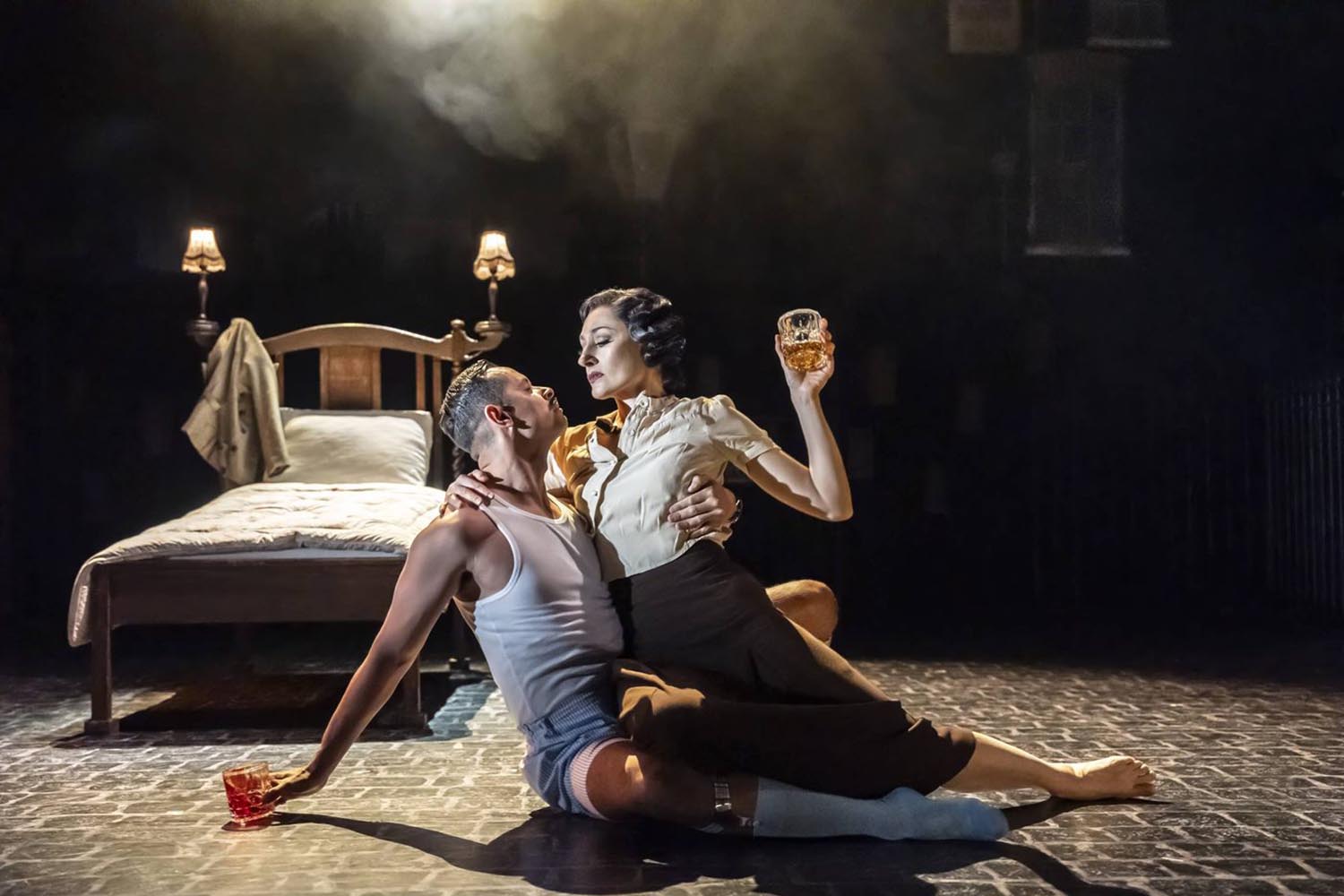Because the works of Matthew Bourne so often fill theatres at Christmas, there’s a popular misconception that they are cuddly and easy.
They are undoubtedly direct, clear and often flecked with humour. Yet Bourne’s distinctive quality as a choreographer is his ability to communicate darker impulses, more savage desires: a prince whose yearning for freedom makes him fall in love with a wild swan (Swan Lake); a sylph left bloody by a man’s determination to possess her (Highland Fling); or, in this case, the alcohol-soaked sad souls of Patrick Hamilton’s books, seeking salvation at the bottom of a glass.
These lost and lonely figures haunt a pub called The Midnight Bell, which is also the title of one of the multiple novels that inspired Bourne to create this superbly compelling piece, weaving Hamilton’s novels and plots into his own narrative of mismatched longing.
One strand follows the ever-hopeful Bob, who has his heart broken by Jenny, a prostitute, while he is in turn unrequitedly loved by barmaid Ella. Another traces the doomed affair between a spinster and the conman who robs her of her possessions but not her pride; yet another follows Ella’s decision to turn down the boring businessman who offers her marriage. A schizophrenia sufferer obsessively stalks a failing actress while – in Bourne’s own addition – a policeman falls for a chorus boy.
Each relationship is described in choreography that is extraordinarily fluid and sensual, each nuance drawn with dramatic precision. Terry Davies’s bluesy, jazzy score, full of drumbeats and melancholy brass, is punctuated by scratchy recordings of songs of the 1930s, to which the dancers lip-sync, expressing romantic sentiments that are often opposite to the ones they are truly feeling.
The work is beautifully structured in other ways too. Lez Brotherston has provided a set in which changes of scene are cleverly drawn by simple means. Against a fixed backdrop of silhouetted rooftops, park railings and neon signs, a bar, a bed, a park bench and the roof of a phone box float in and out of view with the logic of a dream. Paule Constable’s lighting makes each switch of location smokily atmospheric.
The stories have the same flowing quality, melting into one another. Two or three couples share the same bed, their tortured romances unfolding across crumpled sheets. They meet on the same park bench, their inner dramas expressed by little shrugs and shudders, longing looks and quick glances amplifying the stretching of bodies towards one another and away.
Bourne has assembled a remarkable cast of vivid dancers, many of whom have worked with him over a long period. All have the ability to make dancing look like the most obvious way to show thought and feeling, whether it is Michela Meazza’s vulnerable clutching at her bare neck, seeking the pearls Glenn Graham’s swaggering seducer has stolen, or Andy Monaghan’s ease as the happy-go-lucky Bob.
Bryony Pennington turns the plight of Ella into a mini-tragedy of half-stifled desire, while Alan Vincent (once the arrogant Stranger in Bourne’s The Car Man) brings heft and gravitas to the damaged George Harvey Bone, a romantic haunted by visions of violence.
The entire work is one of Bourne’s best, taking unfamiliar stories and creating a world at once long past and utterly recognisable, where nobody quite achieves their heart’s desire but hope springs eternal.
The Midnight Bell Sadler’s Wells, London EC1, then touring
Photograph by Johan Persson

